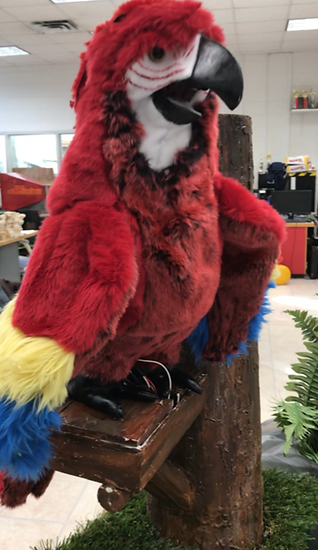
Parrot Animated Figure
-Project Timeline: March 2018 - May 2018, Revisited in 2021
-Skeleton design: Dominick Civitano designed in Fusion 360
-Main control system: Arduino connected to a custom designed PCB controlling 4 servos, a relay, and a sound module
-Main structure material: 3D printed using PLA on a Lulzbot printer, repurposed parrot puppet
This project was an entry into the Technology Student Association's (TSA) yearly design competition. They offer a plethora of challenges but this one was to qualify for the animatronics challenge. The challenge statement was:
"Create an animatronic exhibit that to be placed in a local zoo"
This was an early prototype to test the wing mechanism. I designed the 3D printed wings and torso in Fusion 360. we used an Arduino Uno to control the servos

We were able to find a puppet on amazon that would act as the skin of our animatronic. After de-stuffing the puppet and cutting a gap so we could access the head, we were able to slide the puppet over our 3D printed skeleton.


These pictures show the final animatronic and its display. The tree was made from a PVC pipe that was then coated in plaster and painted to give it the appearance of bark. I was able to design a PCB in Express PCB so that we could solder all the electronics to one board. We also needed to have one movement that required a fluid, so we used a piston attached to an air compressor that was controlled by a relay to move the bird's tail up and down.
This video shows the full figure in action. It had 4 points of articulation and used a sound module attached to a speaker to produce the bird sounds.
Parrot Animated Figure Revisited
In 2021, I decided to revisit this project that I hadn't touched since high school. I began by doing some design work with a new sculpt for both the head and body. after hollowing out these sculpts, in Solidworks, I implemented servos for the body pivot, the beak ope/close, a head tilt, and a head turn.
After I solidified the design, I created a perch for the bird to sit on and then programmed a simple animation using audio from the original attraction and Visual Show Automation software to sync the servo movements with the audio. The final product is shown below.